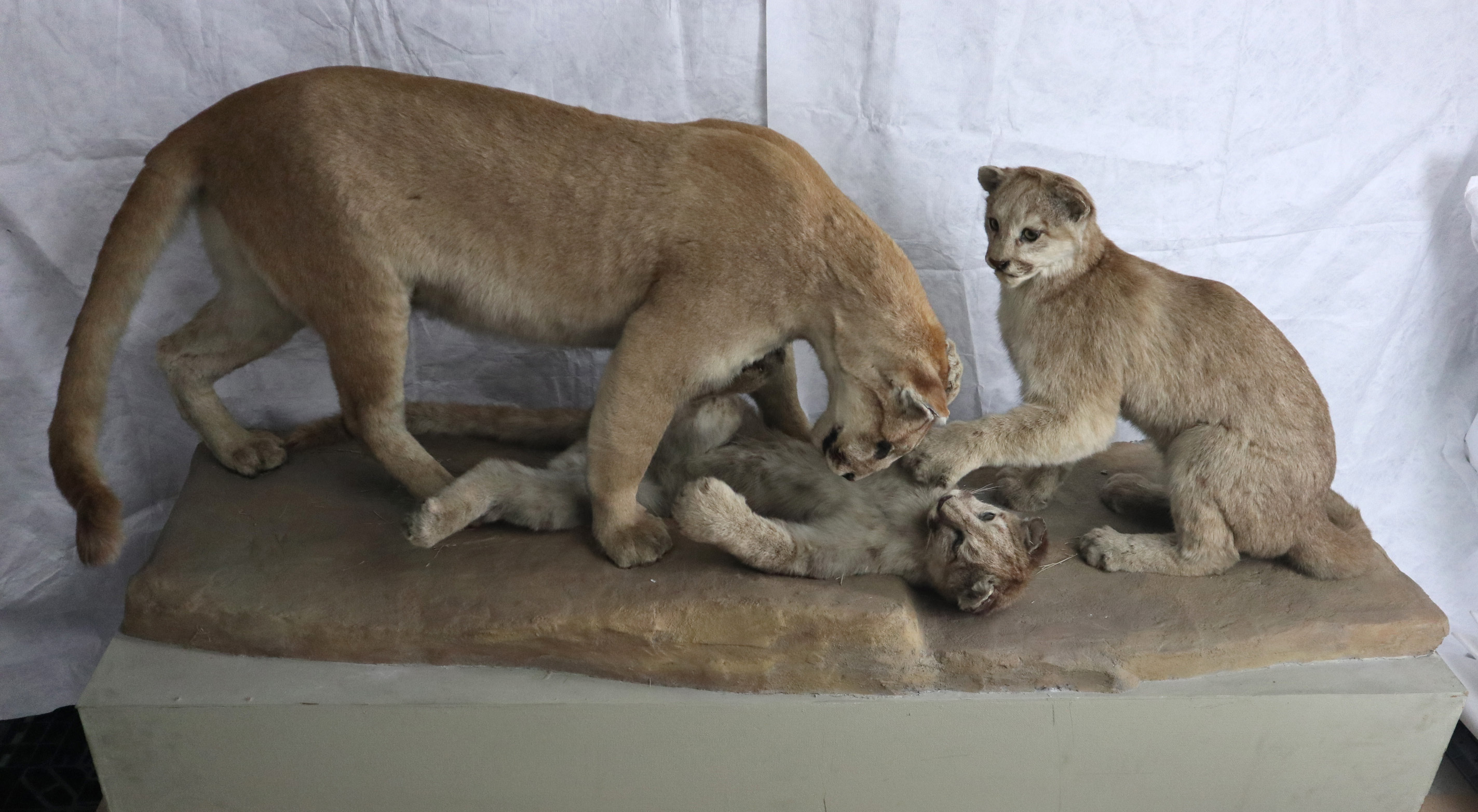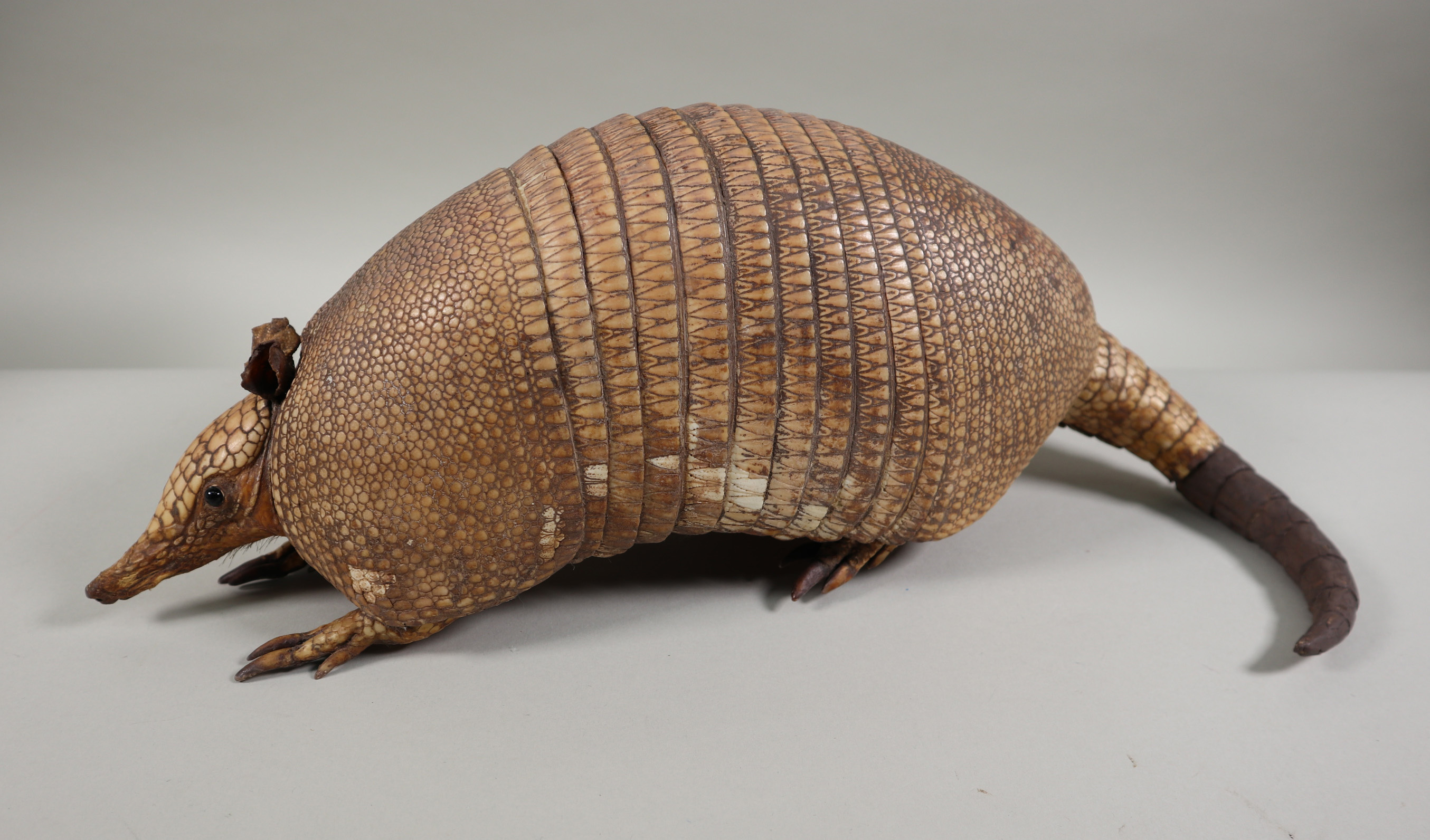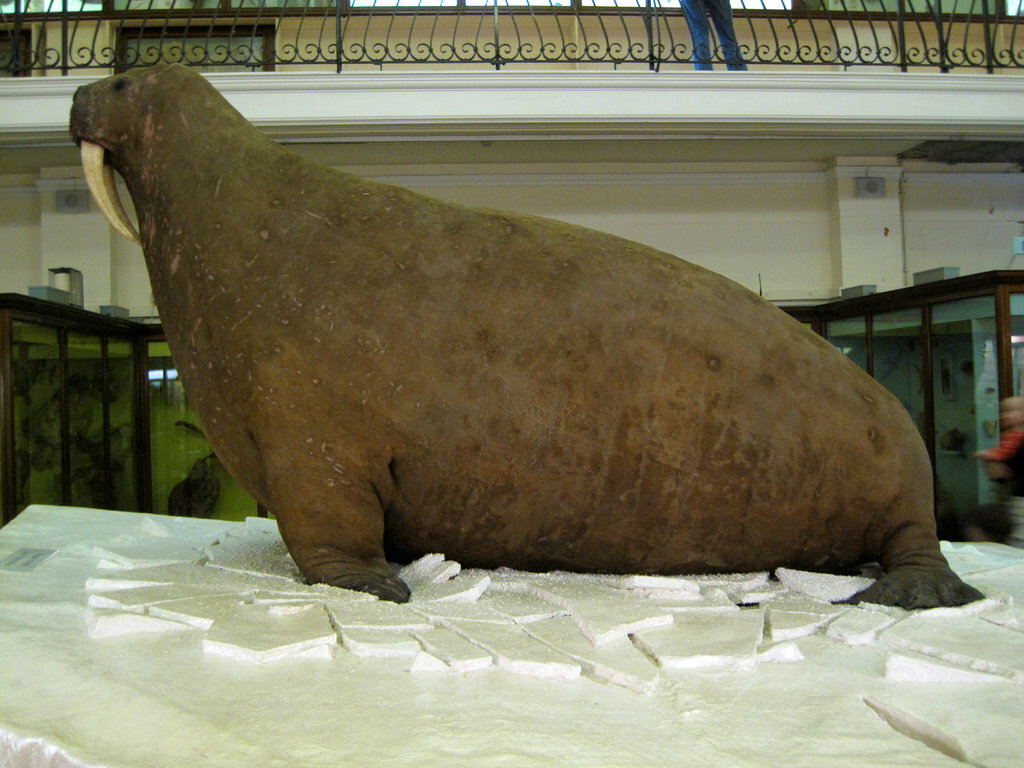
Scattered throughout Discovery, our natural history exhibition for kids, are a small selection of taxidermied animals from the collection. The specimens have come from all over the world, with many exchanged for New Zealand native species.
One of the more "lively" objects in the collection store is a mountain lion mount of a female playing with her two cubs. It came with a mounted grey squirrel from Milwaukee Public Museum in exchange for a pair of huia. Other specimens in the Museum's collection include a common long-nosed armadillo and a number of mounted fish in glass cases.

Taxidermy is the art of preparing, stuffing and mounting the skins of animals with life-like effect and has been practised since the early 1600s, with many changes in the technique since then. Mounted specimens usually have some sort of framework (armature) to give them support. Originally this was constructed from wood, wire, clay, bones from the animal or a combination of these. Modern taxidermists use lightweight forms made of materials such as polyurethane foam to stretch the skins over. This material can be modelled to give a more realistic body shape and lifelike pose to the specimen.
Early taxidermy mounts were often over or under stuffed into unnatural poses. A taxidermied walrus at the Horniman Museum in London has developed a bit of a cult following due to being ridiculously over stuffed in the 1880s. The taxidermists given the job of mounting the specimen had never seen a walrus before and assumed that the wrinkly skin they had been given needed to be stuffed until smooth. The poor walrus looks like it is about to lift off and float away.






